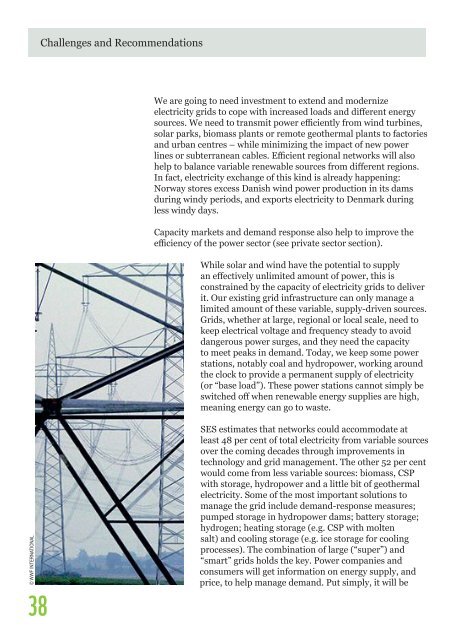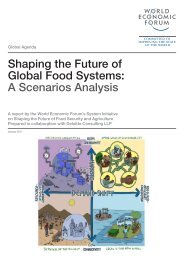Vision 2050
wwf_greater_mekong_power_sector_vision_2050
wwf_greater_mekong_power_sector_vision_2050
Create successful ePaper yourself
Turn your PDF publications into a flip-book with our unique Google optimized e-Paper software.
Challenges and Recommendations<br />
We are going to need investment to extend and modernize<br />
electricity grids to cope with increased loads and different energy<br />
sources. We need to transmit power efficiently from wind turbines,<br />
solar parks, biomass plants or remote geothermal plants to factories<br />
and urban centres – while minimizing the impact of new power<br />
lines or subterranean cables. Efficient regional networks will also<br />
help to balance variable renewable sources from different regions.<br />
In fact, electricity exchange of this kind is already happening:<br />
Norway stores excess Danish wind power production in its dams<br />
during windy periods, and exports electricity to Denmark during<br />
less windy days.<br />
Capacity markets and demand response also help to improve the<br />
efficiency of the power sector (see private sector section).<br />
While solar and wind have the potential to supply<br />
an effectively unlimited amount of power, this is<br />
constrained by the capacity of electricity grids to deliver<br />
it. Our existing grid infrastructure can only manage a<br />
limited amount of these variable, supply-driven sources.<br />
Grids, whether at large, regional or local scale, need to<br />
keep electrical voltage and frequency steady to avoid<br />
dangerous power surges, and they need the capacity<br />
to meet peaks in demand. Today, we keep some power<br />
stations, notably coal and hydropower, working around<br />
the clock to provide a permanent supply of electricity<br />
(or “base load”). These power stations cannot simply be<br />
switched off when renewable energy supplies are high,<br />
meaning energy can go to waste.<br />
© WWF INTERNATIONAL<br />
38<br />
SES estimates that networks could accommodate at<br />
least 48 per cent of total electricity from variable sources<br />
over the coming decades through improvements in<br />
technology and grid management. The other 52 per cent<br />
would come from less variable sources: biomass, CSP<br />
with storage, hydropower and a little bit of geothermal<br />
electricity. Some of the most important solutions to<br />
manage the grid include demand-response measures;<br />
pumped storage in hydropower dams; battery storage;<br />
hydrogen; heating storage (e.g. CSP with molten<br />
salt) and cooling storage (e.g. ice storage for cooling<br />
processes). The combination of large (“super”) and<br />
“smart” grids holds the key. Power companies and<br />
consumers will get information on energy supply, and<br />
price, to help manage demand. Put simply, it will be




